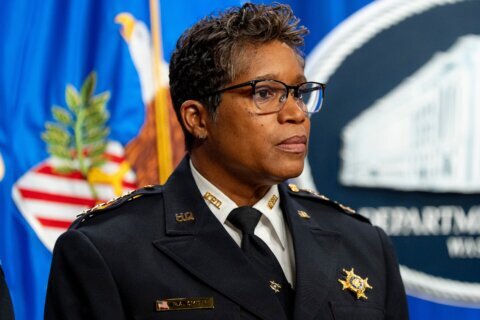WASHINGTON — Following decades of declines, a national spike in traffic deaths is causing concern in the nation’s capital.
“It looks like in 2015, we could be as high as 10 percent up in the number of lives lost on our roadways,” said Mark Rosekind, head of the National Highway Traffic Safety Administration.
On Thursday, the agency kicked off a two-day summit on the issue of traffic fatalities.
Numbers released by NHTSA in February showed a 9.3 percent increase in estimated traffic deaths nationally during the first nine months of 2015.
Estimated fatalities were up 12 percent in the region that includes Maryland, Virginia and Washington, D.C., as well as Delaware, West Virginia, Kentucky, and North Carolina.
NTHSA says that driver behavior contributes to 94 percent of crashes, and a big issue at the summit is finding ways to change that behavior.
When it comes to bad behaviors behind the wheel, “there’s a long list that we all know,” which includes not wearing a seatbelt, using a cell phone, and driving while drowsy or after drinking,” Rosekind said.
To find ways to change behavior, Rosekind asked for outside-the-box solutions from experts in law enforcement, traffic safety and public health.
In addition to continuing efforts to educate drivers and enforce driving laws, “we need to find new ideas,” Rosekind said.
Several of the experts said changing driver behavior would involve changing the standard of what is considered normal behind the wheel.
“We’ve lived through the change in community norms around tobacco, seat belts, recycling, and even hand washing,” said Georges Benjamin, executive director of the American Public Health Association.
Public health workers also suggested getting doctors more involved in preaching car safety to their patients. The issue could be brought up at events like cancer screenings, said Erin Sauber-Schatz, with the Centers for Disease Control and Prevention’s National Center for Injury Control and Prevention.
She also proposed linking police reports and hospital data on motor vehicle injuries to help healthcare providers spot recurring problems for individuals.
David Abrams, a professor at the Johns Hopkins Bloomberg School of Public Health, proposed early intervention for young people who engage in risky behavior.
“Once you get the early warning markers of those kids, think about programs that can do more intensive treatment,” he said.
Other suggestions included taking a closer look at automotive technology that could prevent distracted or drowsy driving.
Rosekind said automated vehicles would be part of the equation for reducing traffic fatalities, but that “human choices” would remain crucial even with that technology.








